8 Reasons Your Ford Truck Starts Then Dies Immediately
Usually, when your Ford truck starts but dies in a second, it points to one or more serious issues with your truck’s internal parts.
So, why does your Ford truck start then dies immediately?
Ford truck starts and then dies immediately because of a fault in the air intake system, the fuel system, or the ignition. The components among these systems most prone to failure are the air intake control valve, the MAF sensor, the fuel injector, and the fuel filter. A faulty ECU can also be a reason.
Here are some tips for easing the burden of diagnosing and solving such a problem.
Ford Truck Starts Then Dies Immediately: Troubleshooting
| Problems | Reasons | Solutions |
| Engine idle speed malfunction | Bad IAC valve | Replace the IAC valve |
| Severe vacuum leak | Damaged hoses, seals or gasket | Replace the damaged hoses, seals or gaskets |
| Incorrect air-fuel ratio | Faulty MAF sensor | Clean if dirty, replace if damaged |
| Lack of fuel pressure | Bad fuel pump, clogged filter or a leaky fuel line | Replace the fuel pump/filter, repair the lea on the fuel line |
| Not enough fuel supplied | Fuel injector gone bad | Replace the fuel injector |
| Engine can’t ignite | Faulty ignition switch/ spark plug | Replace the spark plug |
| Battery doesn’t generate enough voltage | Battery lost its charge | Recharge the battery |
| ECU malfunction | ECU not getting power or faulty ECU | Replace the ECU |

Problem 1: Problems with the Air Intake System
A Ford truck can start and die immediately if the air intake system is faulty. You need to examine the throttle body IAC valve, the air intake system leak, and the mass airflow sensor to solve this issue.
Reason 1: A Bad Idle Air Control Valve
If the IAC valve doesn’t work right, it might not let enough air bypass the throttle plate, causing the engine to have trouble starting.
How to Fix the Air Intake System
Take the IAC out and run some tests. The IAC valve is usually located on the throttle body of the intake manifold.
- Disconnect the IAC valve’s electrical connector. By doing this, you’ll be able to remove the valve from the ECU.
- Loosen and remove the mounting bolts that hold the IAC valve in place with a wrench or socket set.
- Pull the IAC valve out of the throttle body carefully.
- Turn your multimeter on resistance and touch each probe to the IAC valve’s two terminals.
- The IAC valve should give off a reading between 7-25 ohms depending on its temperature and model.
If the valve does not have any resistance, then it is faulty and must be replaced. Before installing, do not forget to test the new valve.
Reason 2: Severe Vacuum Leak
For your Ford truck to immediately die, your air intake system must have a huge leak in its vacuum.
How to Fix the Vacuum Leak
Ensure the vacuum hoses are free of cracks or holes; look for signs of wear or damage on the vacuum lines and fittings. Ensure that seals and gaskets are in good condition.
Solution:
- If any component (hoses, gaskets, or seals) is damaged, replace it. The following video will help you learn how to replace them.
2. If there is a hole or crack in a hose, it’s repairable by using a vacuum hose repair kit. These kits contain patches and adhesives that can be used to seal the leak.
3. If it’s an issue with the intake manifold gasket or other gaskets, you may need to remove the intake manifold and replace the gasket. It may be best to leave it to the hands of a professional as the process is complex and needs special tools.
Reason 3: Faulty MAF Sensor
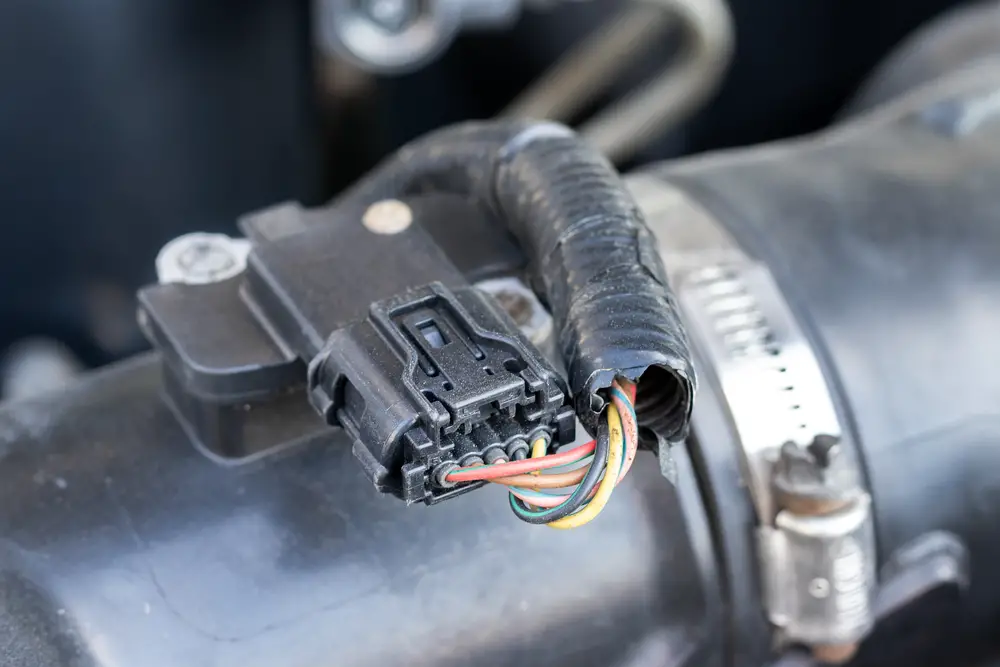
A faulty MAF sensor gives incorrect air measurements to the ECU. Consequently, messing up the air and fuel ratio required for combustion.
Diagnosis:
Usually, on Ford trucks, the MAF sensor is located near the air filter box or in the intake manifold.
- Check if it’s connected properly to the wiring harness.
- Perform a visual inspection of the MAF sensor and the surrounding area. Look for signs of wear or damage, such as cracks in the sensor housing or broken wires.
- Remove the MAF sensor to check if it’s dirty or damaged. Before you take out the MAF sensor, make sure the battery negative terminal has been disconnected first.
- Identify the wiring harness that connects the MAF sensor to the engine control unit (ECU). A clip or tab may secure the wiring harness.
- Remove the wiring harness from the MAF sensor carefully. Hold onto the wiring harness to prevent it from falling into the engine.
- Any bolts or screws that secure the MAF sensor should be removed. Be careful not to damage the MAF sensor when removing it.
- Look for any damages or signs of wear and tear on the MAF sensor and check if it’s damaged. The MAF sensor can get clogged or dirty over time, so a clogged MAF sensor is most likely to malfunction.
Also, a clogged air filter and a severe vacuum leak can cause a MAF sensor malfunction.
Solution:
If your MAF sensor is dirty, then you will need to clean it and put it back. Otherwise, if it’s damaged, you will have to replace it.
You can clean it with a dry cloth. If it needs to be replaced, a new one might cost you between 60-160 dollars. You will have to spend an extra 25-30 dollars for getting a mechanic to replace it
Problem 2: Problems with the Fuel System
A lack of fuel pressure, an issue with the fuel injector, or a clogged fuel filter can cause your Ford truck to die immediately after starting.
Reason 1: A Lack of Fuel Pressure
A lack of fuel pressure could be caused by a bad fuel pump or a clogged fuel filter. You might hear a clicking noise when the truck is off if it has a fuel-related issue.
Diagnosis:
- Turn your car key on. Locate your fuel filter in your car, it should be somewhere near the fuel tank.
- Loosen the bolt and remove the fuel pressure line from the fuel filter. If you can’t feel fuel pressure coming in, that means your fuel pump is bad.
- If there is some fuel pressure coming in, then you will need a fuel pressure test kit.
- Connect the fuel pressure gauge with the fuel pressure line, and it should give you a reading. Your truck’s fuel pressure should be no less than 30 psi.
- Now, if you have low fuel pressure, it’s possible to have a leak in the fuel pressure line. So, visually inspect the fuel pressure line for leaks. Or, you can apply soapy water to the fuel line and look for bubbles, which will indicate a leak.
If there is no leak in the fuel line, then it’s your fuel pressure regulator that’s bad.
Solution:
A fuel pump replacement can cost over a thousand dollars, including the replacement parts, so it is best to get the help of an expert.
In cases of severe leaks, it is best to replace the damaged part of the fuel line rather than try to seal the leak with a fuel line repair kit.
If your fuel pressure regulator fails, you will need to replace it. Here is how to replace it.
- Locate the fuel pressure regulator. It’s usually located near the fuel pump.
- Disconnecting the negative battery terminal.
- Remove the fuel pump fuse.
- Disconnect the fuel lines from the regulator.
- Remove the fuel pressure regulator.
- Install a new one in its place.
- Redo all the removed connections.
Reason 2: Fuel Injector Problem
A faulty fuel injector won’t properly supply the engine with enough fuel.
Diagnosis:
Prior to removing the fuel injectors, the negative terminal of the battery must be disconnected, the fuel pump fuse must be removed, and the fuel lines must be disconnected.
Unscrew the fuel rail and remove each fuel injector one at a time. After taking them out, you will use a multimeter to test their resistance.
- Set the multimeter to measure resistance.
- Touch the multimeter probes to the injector pins. Each of them should have about 20 ohms of resistance more or less.
- All injectors should have a similar range of resistance. The ones that have much more or much less resistance are the ones that are bad.
Also, these injectors might be clogged, so do not forget to check them too.
Solution:
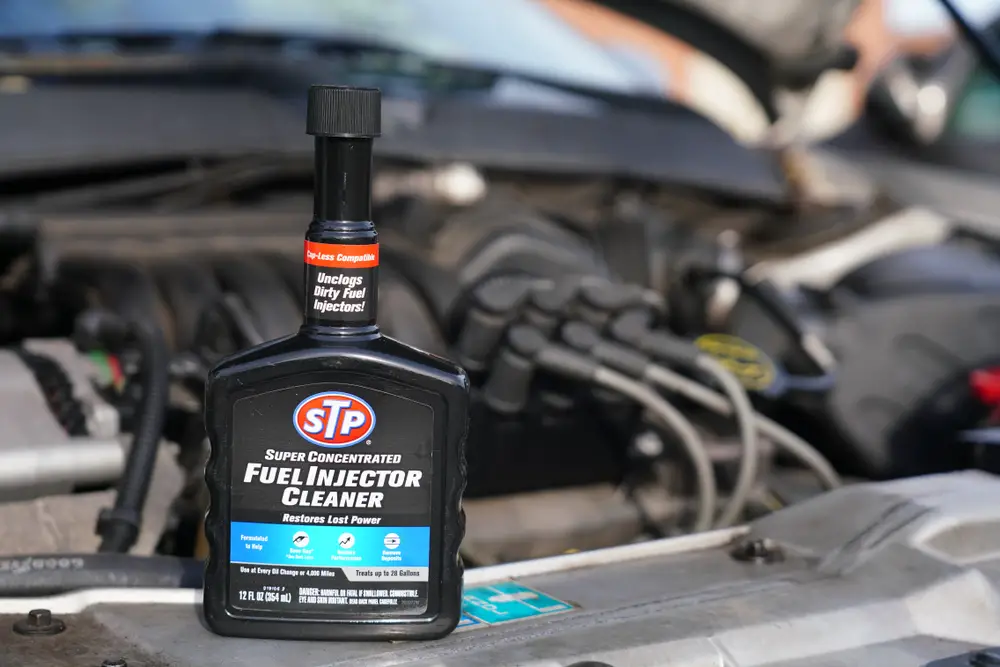
If the injectors are clogged, clean them. They cannot be repaired, so you must replace them.
Prices for fuel injectors range from 60 to 500 dollars, depending on the quality and truck model. Labor can cost up to $250.
Reason 3: Clogged Fuel Filter
A clogged fuel filter can cause a lack of fuel pressure, which can cause the issue you are having.
Diagnosis:
- Locate the fuel filter. It should be along the fuel lines.
- Disconnect the fuel lines from the fuel filter.
- Remove the fuel filter from its mount.
Now you can check if the filter is clogged or dirty.
Solution:
If you do have a dirty or clogged fuel filter, it’s better to replace it than to clean it. A new fuel filter may cost you between $10 and $20. If you replace it yourself, you will probably save 50–60 dollars on labor costs.
Cleaning a fuel filter is hard and not really effective.
Problem 3: Ignition Problem
An ignition switch or spark plug problem can cause your Ford truck to die immediately after starting.
Reason 1: A Bad Ignition Switch
The ignition switch is an electrical component located by the steering wheel that is used to turn on a car. The engine or electrical accessories will not work if the switch is faulty.
Symptoms:
If you have a bad ignition switch, you should have difficulty removing or turning the ignition key. Also, the switch may feel hot when you touch it, which indicates a fault in the ignition switch wiring.
Diagnosis:
If you want to diagnose a bad ignition switch, follow the steps mentioned below.
- Remove the casing that covers the switch. The cover is placed below the steering wheel. Taking the cover off should expose the metal connectors of the ignition switch which is the other end of it.
- Set up your multimeter to measure voltage. Set the range to 20 DC voltage for precise measurement.
- Ground your black multimeter probe to anything metal in your car.
- Now, place the red probe on one of the metal connectors of the switch.
- Turn your ignition key on without trying to start the engine.
- This should give off a reading of about 12 volts on the multimeter.
If there is no voltage or it is much less than 12 volts, you have a bad ignition switch.
Also, you can try to start your engine without the ignition key. With the shroud off, find the brown starter wires and the red battery wires.
Now, have the wires twist together based on their color and make their ends meet. This should start the engine.
If the engine starts, your ignition switch was the problem.
Solution:
If you have a bad ignition switch, you will have to replace the switch. Replacing the ignition switch involves removing the steering column cover and unbolting the old switch.
Reason 2: A Faulty Spark Plug
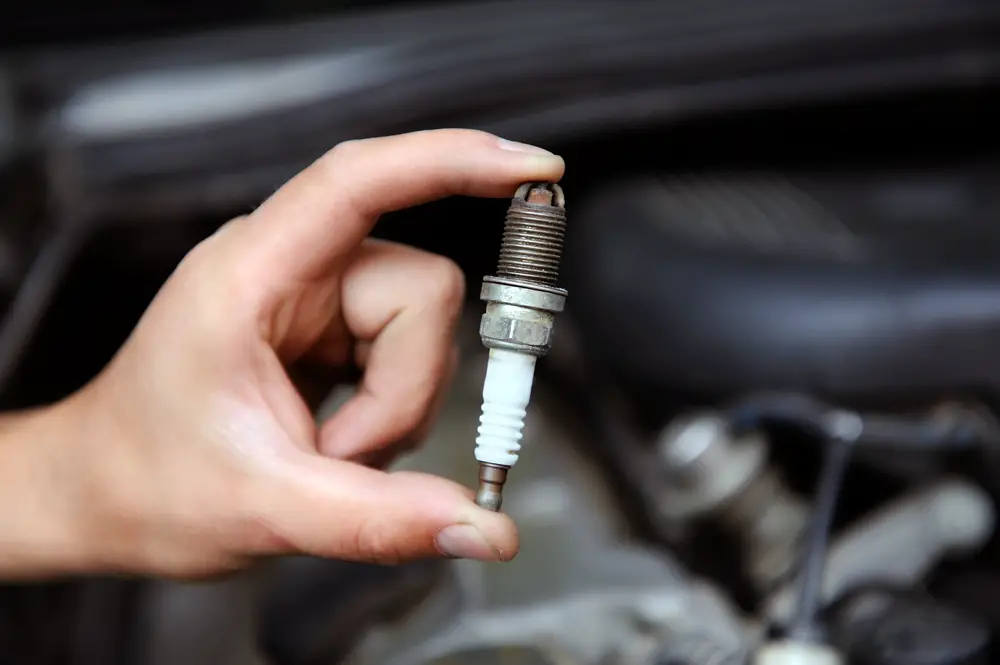
Spark plugs are responsible for delivering an electric spark to the engine’s combustion chamber in order to ignite the fuel and air mixture. So, your vehicle might not start at all if it is faulty.
Diagnosis:
To visually inspect a spark plug for damage or corrosion, you must remove it from the engine.
Spark plug wires connect the spark plug to the ignition system in the cylinder head.
After removing the spark plug, check for corrosion or visible damage. You can also test its resistance with a multimeter if it looks okay.
Here is how-
- Set the multimeter to read ohms. Set the range to 20k ohms.
- Touch both probes to each end of the spark plug. The spark should have some resistance in it.
If there is no resistance, the spark plug is most likely faulty.
Solution:
It’s best to replace spark plugs when they’re faulty. If they’re corroded, you can clean them with corrosion cleaner and try to start the car.
Other Problems:
Beside all these other problems, there are a couple of other issues you must keep an eye out for.
Battery Problem:
If your truck is dying right after you start it, that could mean that the battery does not generate enough voltage to properly start the engine.
Diagnosis:
Use a multimeter to measure the voltage of your battery. If fully charged, the voltage should be around 12.6 volts.
Solution:
If the battery voltage is really low, you can try and jumpstart your car battery, and then it will be recharged as you drive by the alternator. If the battery doesn’t charge, that’s another problem that needs your immediate attention.
ECU Problem:
An ECU is the brain of a vehicle, as it controls and combines almost all the components to maximize vehicle performance. So, if the ECU is faulty, then many problems can occur, including your truck starting and dying in a second.
Diagnosis:
An ECU malfunction is a rare case, and the diagnosis is very complex and requires extensive knowledge. So, if you really suspect you have a faulty ECU, it’s best to contact an expert mechanic.
SolutionA bad ECU is not serviceable, so it’s best if you replace it. Replacing an ECU is very expensive and can cost up to a thousand dollars. So, do not attempt an ECU replacement unless you are certain of it.
Ford Truck Starts Then Dies Immediately – Is it Same for All Models?
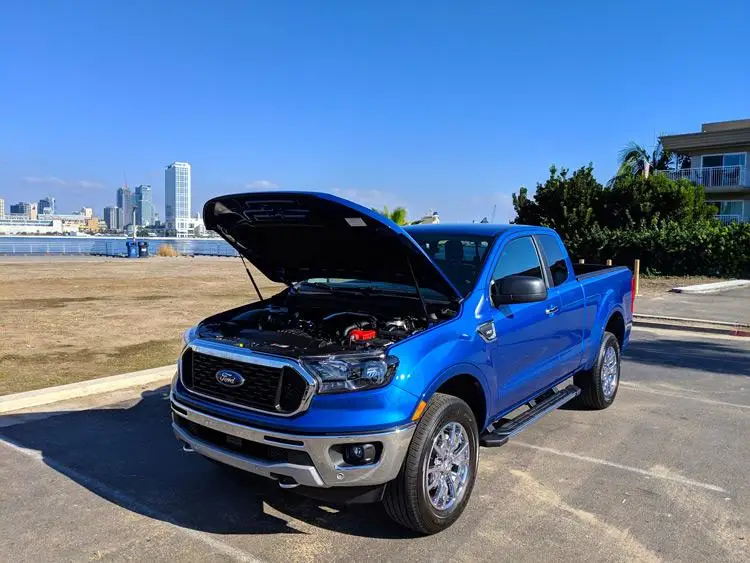
Although the diagnosis applies to all the Ford truck models, in some models, specific components are prone to damage.
For example, if a Ford 5.4 truck starts and then dies, you should first diagnose the fuel system.
If a Ford F250 starts and then dies, a faulty mass airflow sensor is probably causing it, so check that first.
The users of the Ford F150 reported that if a Ford F150 starts and then dies, it’s an issue with the ignition. So, you may want to look into that first.
To summarize, the problems and the solutions are the same for all the models. But the priority order in which they must be diagnosed varies.
Conclusion
If your Ford truck starts then dies immediately, it indicates a serious issue that needs to be looked at as soon as possible.
The issues could involve your truck’s fuel system, air intake system, ignition, battery, or ECM. Since all of these are very important and there are too many components to diagnose, it’s better to call in an expert.
But if you do insist on doing all of this yourself, do use proper and all the necessary precautions.

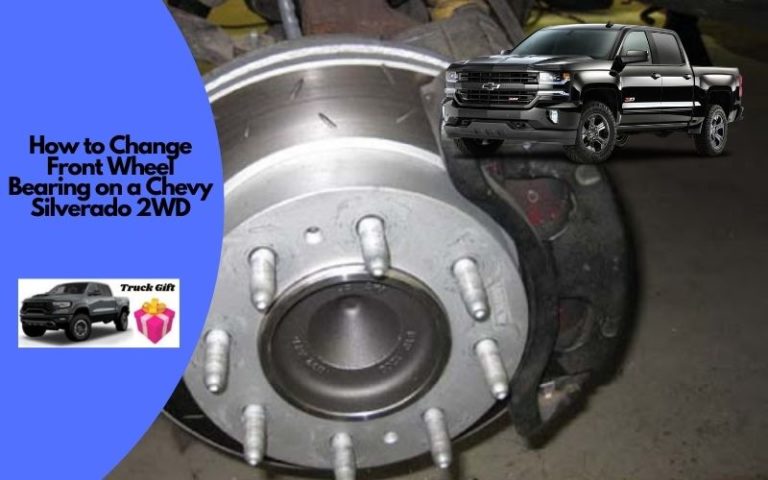
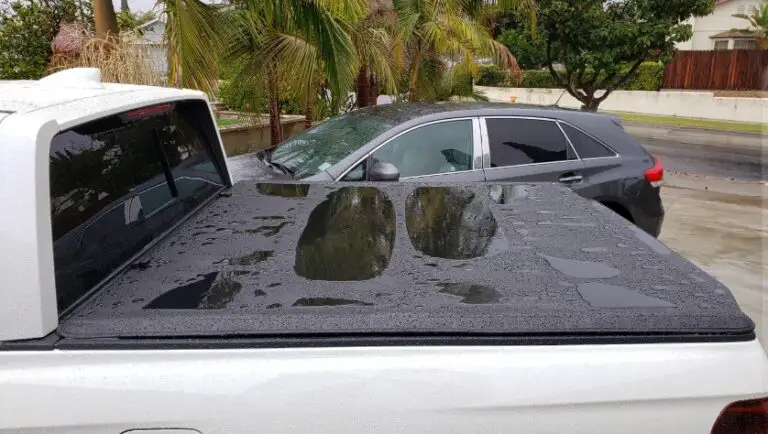

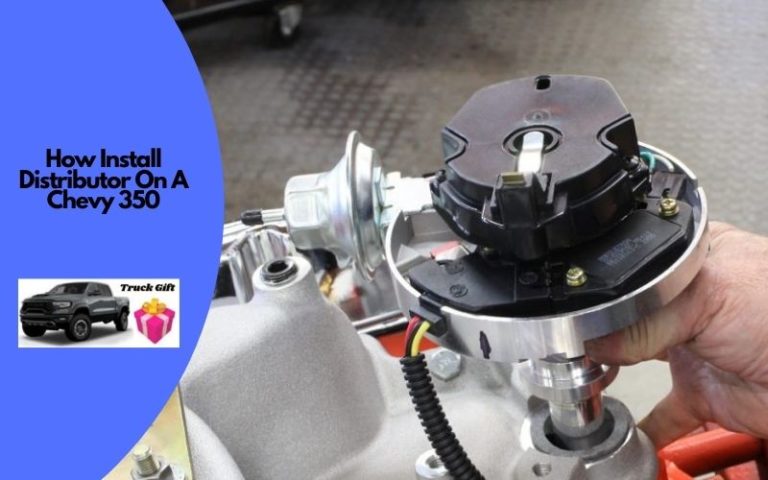
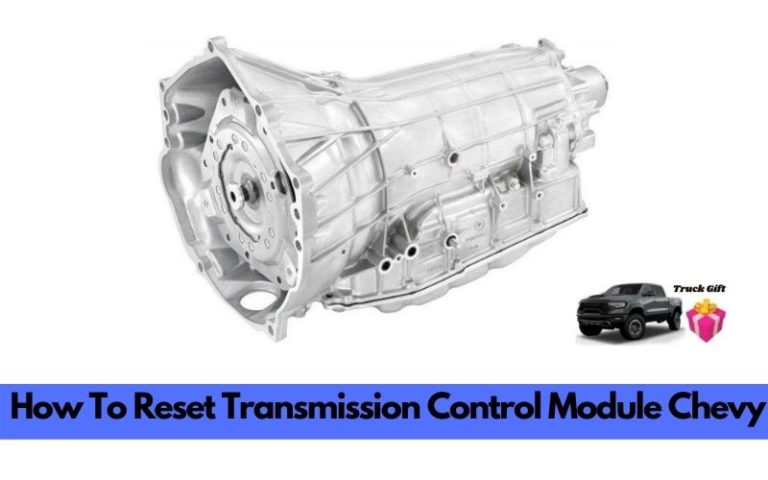
![How To Adjust Valves On A Chevy 350? [8 Easy Steps]](https://truckguidepro.com/wp-content/uploads/2021/08/How-To-Adjust-Valves-On-A-Chevy-350-768x480.jpg)
